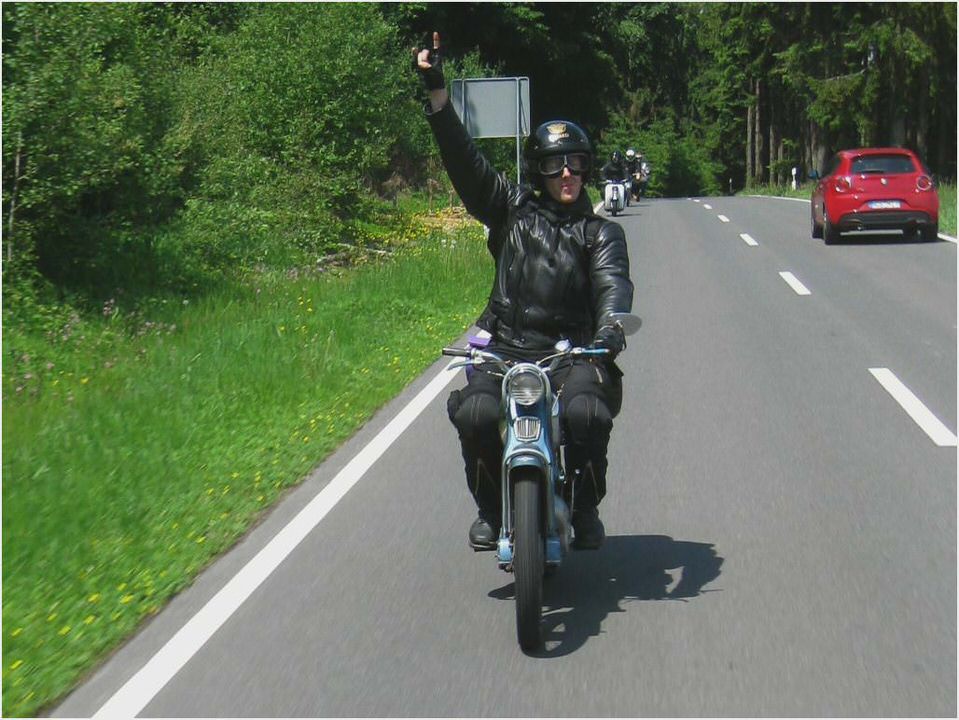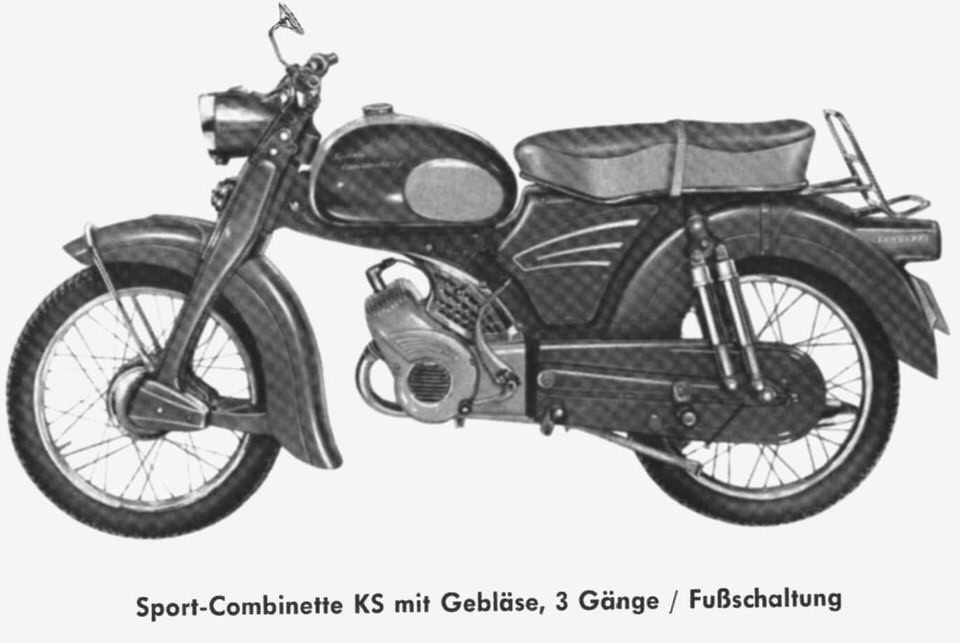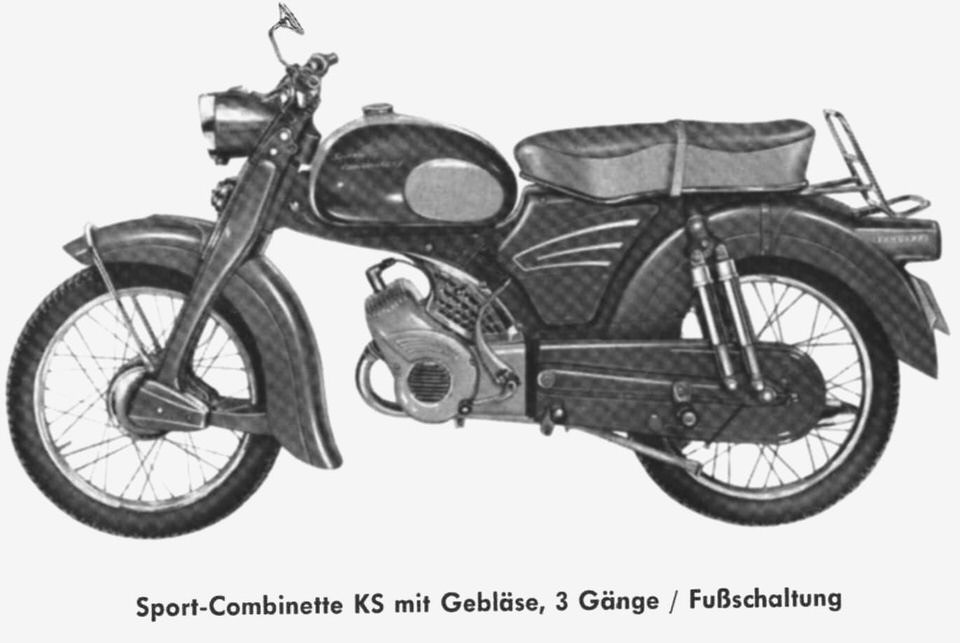
CYCLEMOTOR STATISTICS
by Derek Rayner
Huddersfield is an important manufacturing town in West Yorkshire on the eastern slopes of the Pennines. In the 1950s it was in the West Riding of Yorkshire and the major interests in the town and to a certain extent now, are in chemicals and the woollen trade, with a big football following in both codes – Leeds Road for soccer and Fartown for Rugby League. The hilly nature of the area can hardly be considered as ideal cyclemotoring country.
It had a large fleet of trolley buses for public transport services and these, like the nearby and very similar town of Bradford, climbed the hills almost effortlessly. Other places in the same county of Yorkshire, such as York itself with its flat terrain, certainly were far better for cyclemotoring and the older residents there tell of literally hundreds of little smelly machines buzzing slowly up the road when that City’s railway works and two chocolate factories turned out. Cyclemotors were the first cheap and cheerful means of powered transport available to the population during the austerity days just after the Second World War and they certainly became a very attractive and low cost means of getting about.
Given the above parameters and the existence of the Huddersfield County Borough Council vehicle licensing records, a full survey of these records has been undertaken from the beginning of July 1949 to the end of June 1957, a period of eight years which spans that time which can be justifiably called ‘The Cyclemotor Era’. The results of these investigations form the basis for this article.
Over the eight years concerned, some 347 cyclemotors were taxed in Huddersfield using the registration letter ranges ECX and EVH, FCX, FVH etc. through to LCX, LVH and MCX and although the town cannot perhaps be judged typical of other locations in so far as numbers are concerned, it is felt that the trends noted are indicative of the way in which other places also reacted to the rise and fall of the cyclemotor.
The first noted cyclemotor registration, in August 1949, interspersed with many autocycles such as the CycAuto, New Hudson, Raynal and ABJ, was a Mini-Motor and then what can only be described as an explosion occurred in the first six months of 1950 when no fewer than 52 Mini-Motors were sold and were presumed then to be found powering their way around the streets of the town. It was not until September 1950 that the virtual stranglehold of this make was broken by the first Cyclemasters and it was these two makes which predominated up to 1954.
They were distributed by three firms in Huddersfield; Duncan Hoyle, Wakefield Road, Mold Green and Butlin Brothers, East Parade for Mini-Motors together with Hebble Auto for Cyclemasters. There were also the other odd individual makes such as a Corgi scooter in 1950, with a few others subsequently and Mosquito and Cymota in 1951 1952 and these continued to be interspersed with autocycles but the most consistent other cyclemotor at this time was surprisingly the GYS which subsequently became the Mocyc.
It must be remembered that although the first of these was manufactured in Bournemouth, latterly they were made by Cairns of Todmorden, Yorks. only about 16 miles away – clearly a case of a local product finding favour with the local market. Oxford Street Motors were the distributors for these machines.
The first Power Pak came along in March 1952, credited to Smithy Garage. The first 32cc Cyclemaster was noted in July 1952, all those previously having being 25cc machines. The first Vincent Firefly was in September 1953 whilst one month later, the first BSA Winged Wheel appeared on the scene. With an initial influx of 71 machines in 1950, the yearly figures of cyclemotor registrations remained fairly constant until 1955 when the decline set in.
Notwithstanding the falling figures, even at this late stage in the cyclemotor ‘boom’, there were still new types of machines taking to the road. The first Cyclaid appeared in December 1954, a solitary Cucciolo in February 1955 and then the first of two Norman Cyclemates, the underpowered Cyclemaster moped, was registered in June 1955.

Other firms in 1951/2 to sell cyclemotors were Martins, Bradford Road (Cyclemaster) and Wiley Bros (Power Pak Mosquito), whilst early in 1953, the Universal Radio Cycle Shop in Brighouse and also Bradley Engineering were credited with 32cc Cyclemasters. Later in 1953, in the month of September, Wigfalls sold a Cyclemaster, adding several more in November of the same year.
An unusual entry was a Vincent Firefly in the same month that was credited to Huddersfield Passenger Transport Department from Duncan Hoyle. One wonders whether it was for revenue protection purposes or some other more mundane task. Butlin Bros expanded into Winged Wheels and Fireflys whilst Martins also sold Winged Wheels as well.
Unusually, the solitary Ducati Cucciolo was registered directly to the user, Mr. E.H. Raw of Fixby. Later, Duncan Hoyle’s shop took on the Cyclaid and also the Cyclemate.
During the decline, Mini-Motors (presumably by then the MkV gold coloured tank version) put up a late challenge and Vincent Fireflys (or should that be Fireflies?) were particularly popular right through the 1955/56 period.
For the last 18 months up to June 1957, only 9 machines were registered, these being 3 Cyclemasters, 5 Fireflys and the last machine of all, a Winged Wheel in February 1957. The firms involved with these last series of transactions were Butlin Bros (Vincents), Quarmby Garage, a new name, for one of the Cyclemasters, Duncan Hoyle (Cyclemaster and Vincents) and the final Winged Wheel by Butlin Bros, somewhat ironically, the firm which was first involved with the cyclemotor revolution when it started the eight years or so previously.
As the registration of cyclemotors tailed off, mopeds such as the Mobylette and NSU Quickly, together with scooters like the Lambretta LD125 took over, and there were some minority makes like the Piatti (the Cyclemaster produced scooter), Kieft (from Holland), the German Heinkel Perle and Zündapp Combinette as well as the Mercury Dolphin (or was that Dolphin Mercury) as well. Butlin Bros continued to sell machines with obviously a different demand; they merely changed their product range and as well as Phillips Gadabouts and NSU Quicklys, also sold a disproportionately large number of Her-Cu-Motors in late 1957, for which there seemingly became a particularly high demand.
The total numbers of machines registered month by month were as follows:


- Help required for restoring Enfield Fury 175 gp – Page 5 – Team-BHP
- Gt5_vw_beetle
- For Your Eyes Only
- ZÜNDAPP
- NEWS 2 READ! Follow our Motorized World news here!
